Twenty-four flights had been cancelled on the island of Bali as of July 8, 2025. Many more activities had been put on hold following the eruption of Indonesia’s darling Mount Lewotobi Laki-Laki. Yet, this doesn’t make the list of the most powerful volcanic eruptions in history.
Discussing the most powerful volcanic disasters in history often brings to mind a particular eruption that froze time. Another of these historic volcanic eruptions produced the loudest sound ever recorded in the history of the world.
The Mount Lewotobi Laki-Laki volcano serves as a stark reminder, a mere tip of the iceberg of what our mountains can do when they feel ignored.
Some triggered major revolutions in technology, art, and government. At the same time, another handful caused global temperatures to drop by significant points. The Mount Lewotobi Laki-Laki volcano serves as a stark reminder, a mere tip of the iceberg of what our mountains can do when they feel ignored.
Despite how low it ranks in the list of most devastating volcanoes, the Laki-Laki eruption was disruptive enough to affect hundreds of thousands of people. Over 4,000 people had to hurry out of their beloved homes.
Those who were too attached to join the exodus had to brace themselves for the consequences. Food, water, and masks soon ran out, leaving them stranded.
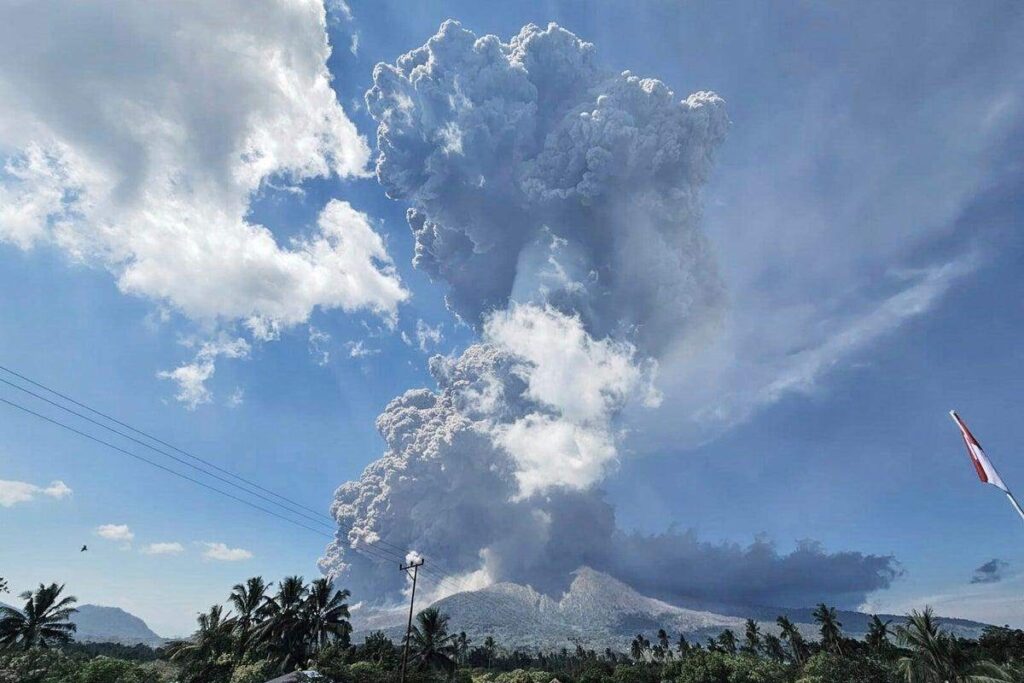
But Mount Lewotobu’s tantrum wasn’t fresh. It had begun in the early part of 2024. During that time, over 6,500 people left their homes. Also, the closest airport to the mountain, the Frans Seda Airport, was closed and remains closed.
The 5,197-foot mountain has released hot clouds as high as 11 miles. Afterward, the debris fell over and covered the surrounding villages with the ash. Lava from the volcano also rushed down the mountain, destroying anything that dared stand in its way.
Yet, this is child’s play compared to many others before it. Let’s see these other volcanoes that shook the world.
Pompeii’s Doom: Mount Vesuvius and the Day Rome Stood Still
In 79 AD, the legendary city of Pompeii disappeared from the face of the earth. The culprit? A devastating volcanic eruption caught everyone unawares. On August 24, the quiet Mount Vesuvius exploded in great fury.
The explosion released a cloud of ash and pumice into the air. It rose to 10 miles into the air before it descended dangerously on the surrounding residents of the mountain that had previously been quiet for centuries.

Ash and pumice stones landed harshly on the inhabitants as they scampered in terror and ran for cover. In its wake, thousands of homes were destroyed. The deserted streets of the city were covered in up to 3 inches of debris.
Hundreds of thousands had escaped the city. However, a loyal and optimistic set of 2,000 people remained, hiding in cellars and refuges made of thick stones. They were expecting to recover their beloved city after a few hours.
Unfortunately, it was the worst decision of their lives. Poisonous gases were already flowing down Mount Vesuvius and into the city. By the next morning, everyone was dead, choked to death by the highly toxic gas.
In the 18th century, archaeologists were able to unearth valuable artefacts and relics that were preserved under the cloud of ashes.
Rome was terrified to the bone. One of its most iconic cities was no more. The disaster, however, froze the affected city for many decades. Even its nearby city, Herculaneum, suffered the same fate.
In the 18th century, archaeologists were able to unearth valuable artefacts and relics that were preserved under the cloud of ashes. From 1748, when a farmer found materials that traced back to Pompeii on the ground, excavations have continued on the site to date.
Archaeologists also recovered the remains of some of the 2,000. The Vesuvius volcano has remained one of the most remarkable historical events to rock the continent of Europe. Let’s check out the continent of Asia.
Mount Fuji: How a Volcano Inspired Centuries of Art
After an eruption rocked Mount Fuji, the Japanese people turned their attention to the mountain and derived inspiration for centuries of outstanding art. It all began in 1707 when the 12,389-foot mountain belched.
Mount Fuji, also called Fujisan, is Japan’s tallest volcano. It is also the country’s most iconic mountain. Unfortunately, the hill brought some woe to its surrounding villages when it erupted in December.
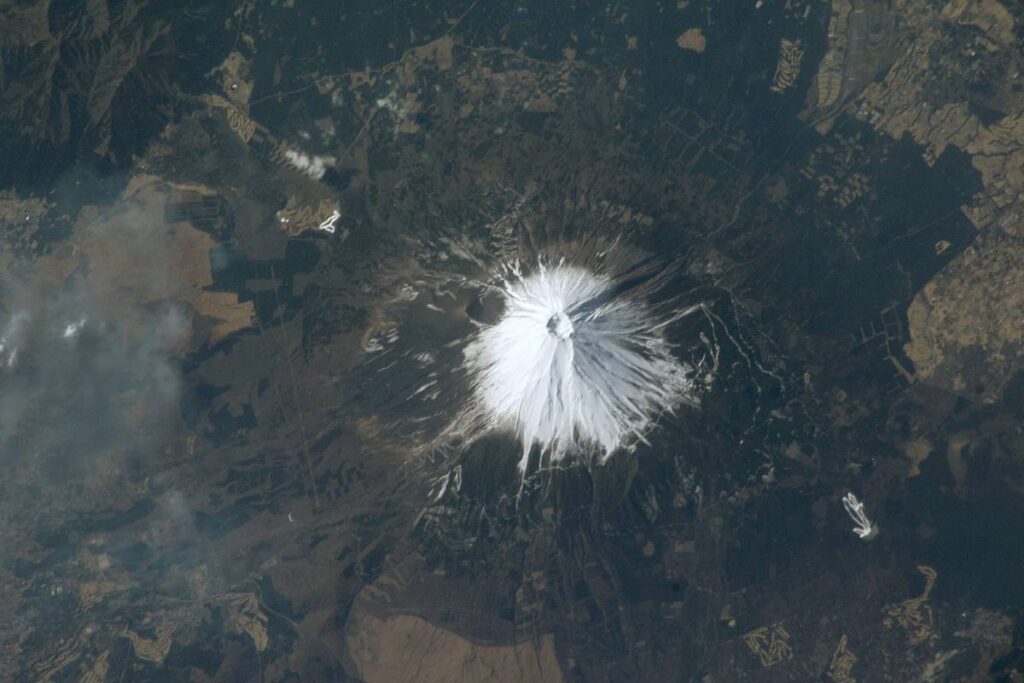
The eruption came after the warning of an earthquake. Although the explosion wasn’t as dramatic or violent as many others, it caused quite some painful damage. Volcanic ash poured down on the land up to 100 kilometers away.
Crops died as a result, and the roofs of houses couldn’t bear the weight of the falling debris. Rivers were blocked, and thousands of people surrendered their homes and communities to the disaster. But the volcano, which was also called the Hoei Eruption, turned out to be a blessing in disguise.
Many of them viewed the volcano as an expression of well-deserved divine judgement.
Mount Fuji is no longer remembered only for its eruption. It is an art inspiration. Over the centuries, many artists have honored the gigantic structure with their creativity.
One example is the “Thirty-Six Views of Mount Fuji.” It is a woodblock print that shows the mountain from different perspectives and weather conditions. The brain behind it was the notable painter and printmaker, Katsushika Hokusai.
Also, many painters and poets began visiting the mountain to tap from its well of inspiration. Even Shinto and Buddhist monks found spiritual relevance in associating with it. Many of them viewed the volcano as an expression of well-deserved divine judgement.
Mount Etna: The Fiery Giant That Shaped Ancient Mediterranean Powers
Europe’s most active volcano lies on the east coast of Sicily, Italy. Thanks to its fiery exploits, it has carved a name in the history and politics of the Mediterranean world. The stories behind its eruptions are outstanding and fascinating.
The mountain lies between the two regions of Messina and Catania. Both cities have had to clean up after their eruptions. They have also had to rebuild many times after being ravaged by the explosions and their components.
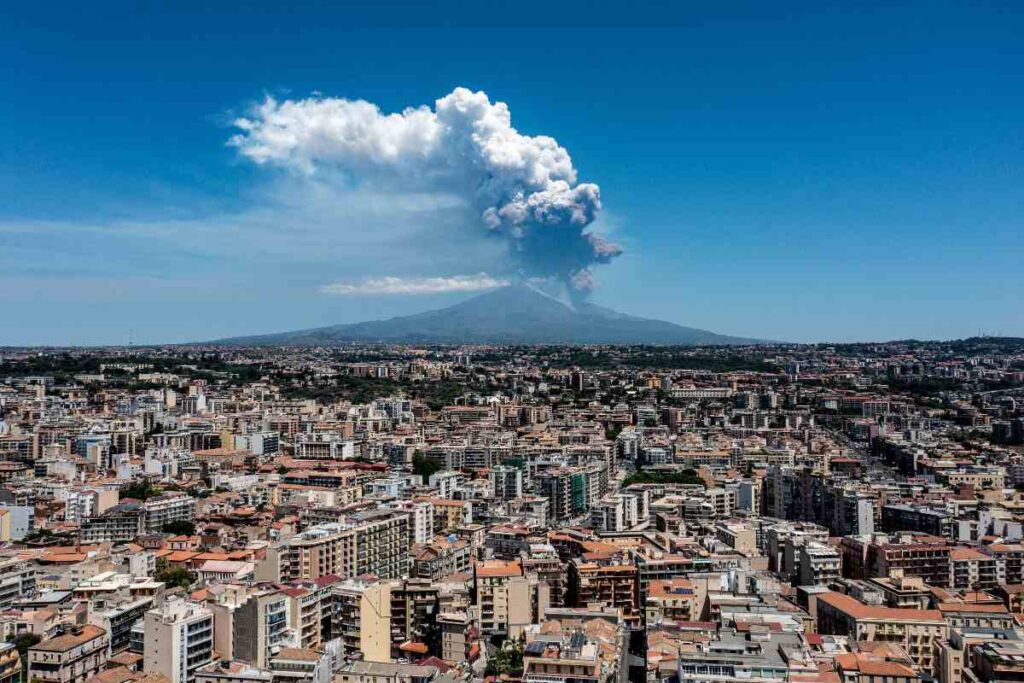
However, the volcano also contributed to their economic prosperity. Volcano after volcano enriched their soil and increased yield and income. As a result, the regions produced grains, olives, and wines in abundance.
The sky was darkened for days. Sunsets were orange or red due to the gases it released into the atmosphere. Global temperature dropped, and 36,000 people died.
More notably, the eruptions helped scare away enemies and invaders. The Romans and Greeks believed that the mountain was the habitation of a mythical spirit called Typhon. Typhon was feared for its destructive and brutal personality.
True to its reputation as a protector, the mountain erupted in 396 BCE just before an invading army could overrun the city of Catania. Lava flowed down from the rock and chased back the advancing Carthaginian army.
The volcano was also the force behind many political decisions and policies. The repeated eruptions of these volcanoes constantly challenged the local Roman Empire. They budgeted more resources towards rebuilding the infrastructure that the volcano had damaged.
Next up is the loudest volcano ever. We’re moving back to Asia.
Krakatoa 1883: The Explosion Heard Around the Globe
No natural or manmade activity can rival the Krakatoa 1883 volcano in terms of sound. When the mountain on the Indonesian island of Krakatoa erupted on August 27, it made the loudest sound ever recorded in history.
It’s 310 decibels, which is about twice the volume that the human ear can bear. According to reports, about 40 sailors had their eardrums damaged by the sound. It traveled more than 3,000 miles, and its waves went around the Earth seven times.
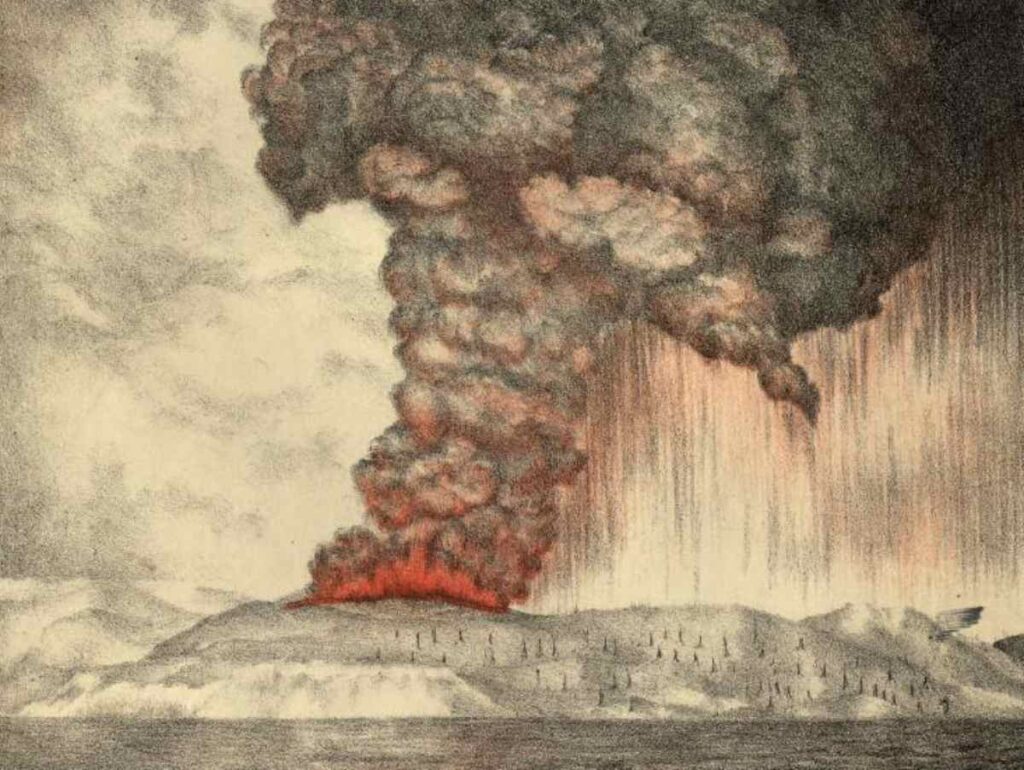
The force of the explosion instantly damaged more than half of the island. It also caused tsunamis in the ocean, lifting waves to 40 meters into the sky.
It was an eruption that made the world stand still. The sky was darkened for days. Sunsets were orange or red due to the gases it released into the atmosphere. Global temperature dropped, and 36,000 people died.
Tambora 1815: The Eruption that Triggered a “Year Without Summer”
Have you heard about the “year without summer?” It was a time when temperatures dropped significantly in many parts of the world. Why? A massive volcano. To date, the Tambora 1815 eruption is the largest the world has seen.
It all began on April 5 when Mount Tambora presented little explosions. But the Sumbawa Island, Indonesia, mountain was only preparing for the big one. On April 10, a volcano erupted in a blast that superseded that of Krakatoa.
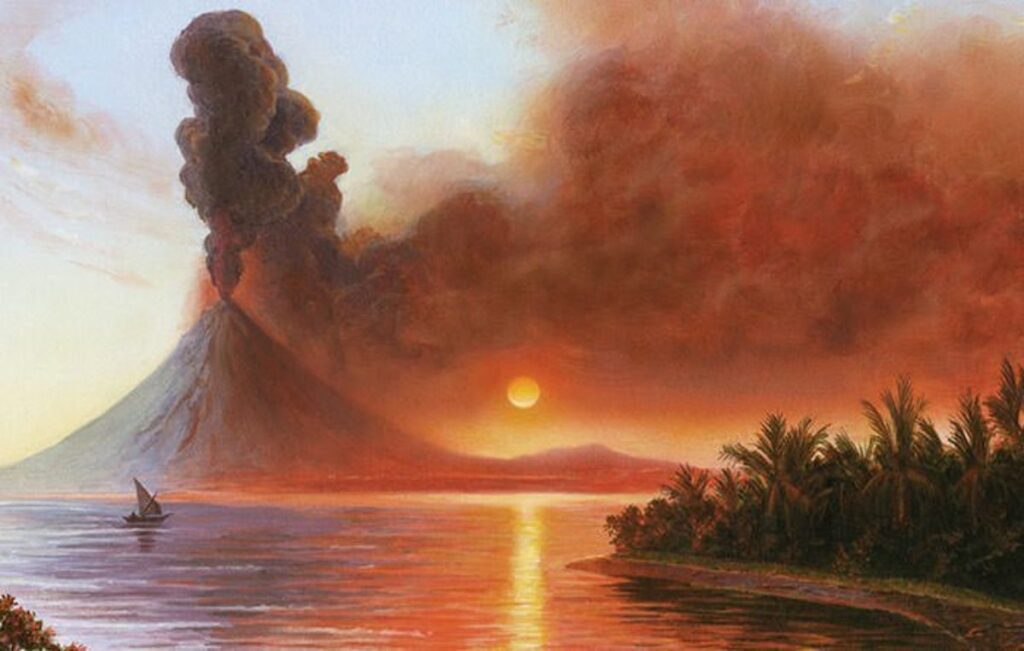
The explosion was so big that it removed the top third of the Tambora mountain. The once 14,100-foot mountain soon dropped to a height of 9,350 feet. Ash, pumice, and toxic gases rose into the sky before descending like rain on the nearby villages.
The falling ash reached up to 800 miles away, while the sound of the explosion was heard as far as 1,200 miles. Although the sound wasn’t close to that of Krakatoa, it was massive nonetheless.
There was massive destruction of crops and livestock, resulting in a famine that spread even to Europe, China, and North America.
The death toll was frightening. Over 71,000 people died as a result. About 12,000 of those were killed by the explosion itself. There was massive destruction of crops and livestock, resulting in a famine that spread even to Europe, China, and North America.
One of the most notable consequences of the Tambora 1815 eruption was its impact on the climate. The volcano released gases into the atmosphere that blocked sunlight. As a result, the Earth became cooler.
Temperatures dropped by about 2 degrees Celsius in places like Canada, Germany, Ireland, Switzerland, and New England. These places missed out on summer and continued to experience winter from June to August.
But when it comes to cooling the planet, the Tambora volcano later met its match. But it took more than 100 years.
Mount Pinatubo 1991: The Eruption that Cooled the Planet
Still in Asia, a volcano erupted in the Philippines’ Mount Pinatubo on June 15, 1991. Despite the advancement in volcano monitoring and warning systems, the eruption managed to do significant damage to human lives. More than 847 people died.
Over 200,000 people fled their homes as ash rained down on their dwellings. The devastation led to the closure of two U.S. military bases to date. Many years later, the people continued to suffer from Lahars.
From the destruction of whole cities to the disruption of climate, art, and governance, we know enough of what one angry mountain can do.
The Mount Pinatubo 1991 eruption was the biggest eruption of the 20th century. The island of Luzon, where Mount Pinatubo is, had been silent for more than 500 years before it suddenly erupted into a rage.
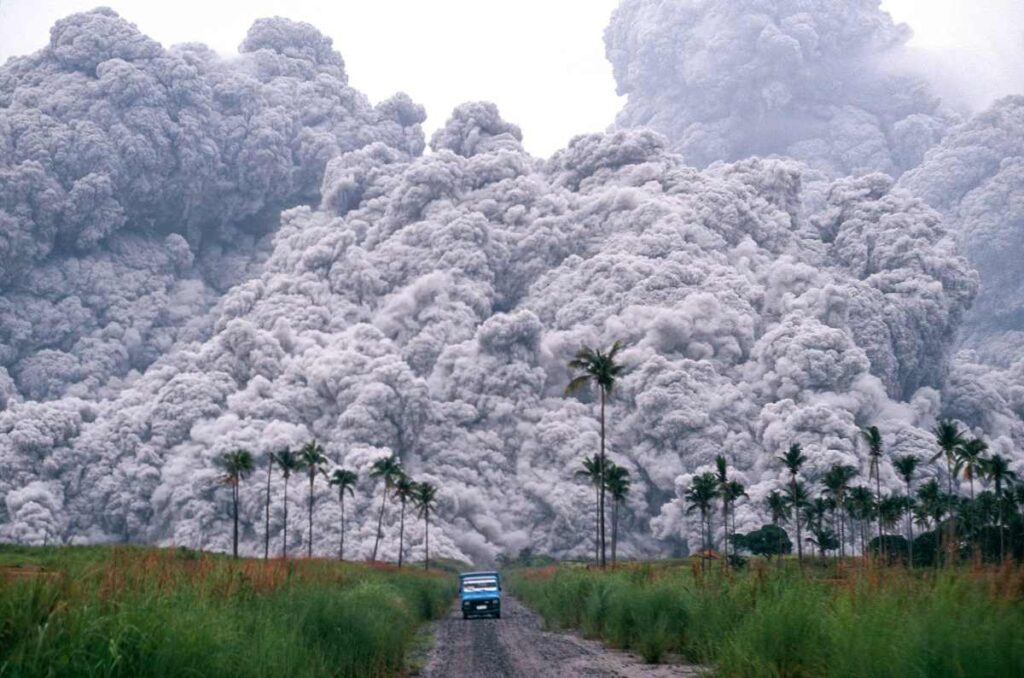
It ejected ash into the atmosphere up to 22 miles high. Unfortunately, a typhoon was in progress not very far away. Sulfuric gas from the eruption mixed with the rain from the typhoon and attacked buildings, bringing many to the ground.
The Pinatubo volcano lowered global temperature by 0.5 degrees Celsius. But the fascinating part was that this drop lasted for close to 2 years. The volcano also triggered renewed volcano monitoring efforts and greater collaboration in the country and region.
Volcanoes Aren’t Done Yet
As we look back on some of the most history-altering volcanoes that have rocked our world, we must ponder the future. From the destruction of whole cities to the disruption of climate, art, and governance, we know enough of what one angry mountain can do.
Volcanoes are up ahead. Ones that will further impact our world. Sure, they are known for their destructive past. But they have also contributed a great deal to the advancement of society. For this reason, our fear, though inevitable, should be mixed with respect.
Thankfully, society is better prepared for the next one. The development of advanced volcano-warning technology, early warning, and international cooperation should reduce the death toll to its barest minimum.
So, we can look forward to the next big eruption with more optimism, knowing that it will bring along with it a new direction for humanity. Volcanoes have done it before, and they will do it yet again.
Let’s hear from you. Which of these history-changing volcanoes did you find most fascinating?

